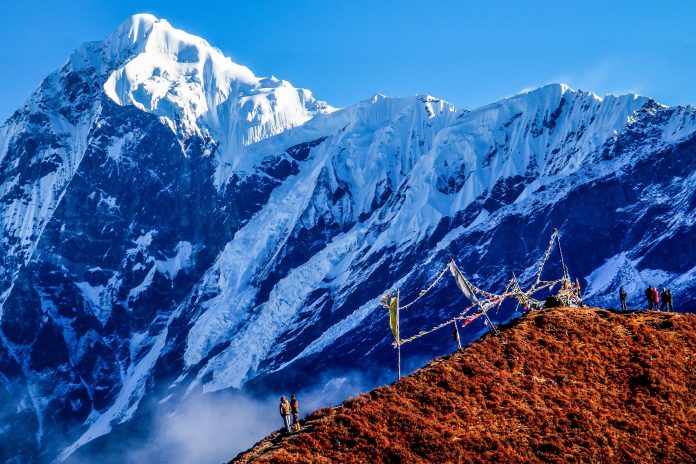Northeast India is one of the country’s most untouched and unexplored parts. Rich in culture, jaw-dropping beauty, and a tour of nature that you can never forget in your entire life. You learn so many things about life, people, culture, and nature when you set out to travel. To experience the beauty of the North East in its full glory, Goechala trek is one of the best things you can take up. Goechala trek is an inviting destination in the heart of Sikkim with beautiful mounting summits with gurgling streams meandering through expanses of meadows.
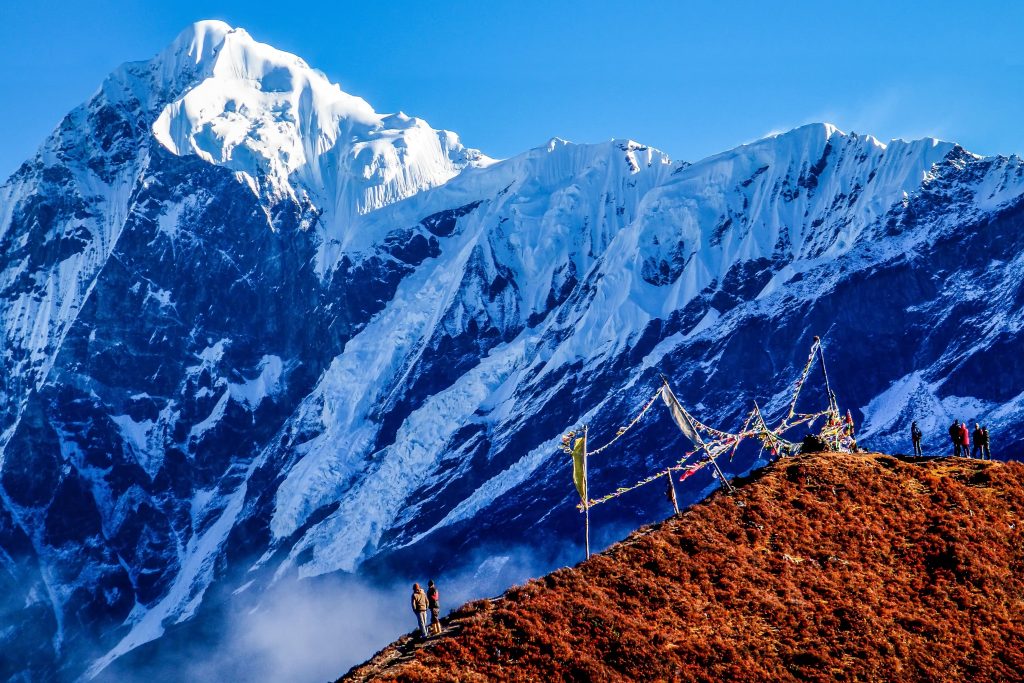
This exhilarating trek will take you through the spine-tingling beauty of the Sachen while pacing towards Bhakim, Tshokha, and Dzongri. The mystifying Dzongri peak will offer a stunning view of the Kanchenjunga and Pandim peaks. At the same time, Goechala pass trek will enchant you with its enrapturing mountain views from a majestic pinnacle of 4,940 m
The Goechala trek is considered one of the most romantic treks. Get ready to be enchanted by the stunning mountains, the fascinating culture, and the people. The mesmerising trail will lead you to some of the most breathtaking views. Enjoy the romantic walk through the forest regions, lush meadows, and startling blue waters alongside the trail.
Goechala Trek distance
The overall trek distance of this beautiful expedition is around 90kms, and therefore it will be an 11 to 12 days journey. Even though it is 11 to 12 days, once you reach the finishing line of this trek, you and your fellow trekkers will be mesmerised by the view it offers.
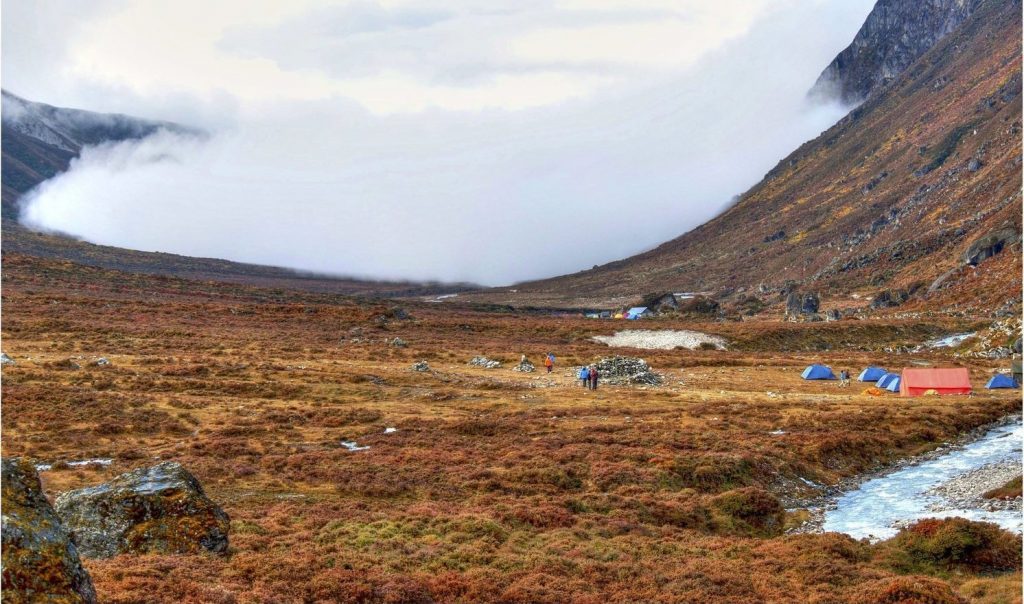
Major Attractions of the Goechala trek
Yuksom: Yuksom is the start of the spectacular Kanchendzonga trekking trail. It was the first capital of the Sikkim kingdom that handed over its title to Gangtok.
Yuksom literally translates as “the meeting place of the three learned monks,” the monks who chose Phuntsog Namgyal to be the first king with the title “Chogyal”in 1642 AD. It is part of the Geyzing subdivision and is a popular tourist destination for adventurers and hikers. Several monasteries surround it, as does the ancient kingdom’s coronation throne, which can still be seen here. Yuksom is surrounded by lush greenery, with pristine lakes and spectacular hills.
Sachen – In terms of accommodation, Sachen has limited resources, few developments, and other facilities. Trekking your way from the town of Yuksom through the green meadows alongside the Rathong river, you can reach Sachen. Sachen lies at the pinnacle of 2,195 m with an array of beautiful log huts, which can be seen lining below the trails with the gushing waters of the waterfall that sings throughout the meadows.
Tshoka: It is a small village with little houses floating on the edge of the valley that drops down from the other three sides. It is the only thriving settlement in the Kanchenjunga National Park region. Tshoka offers bushy shrubbery with vertical gradients and thick impenetrable forests ornamenting the trekking trails. It is home to many Himalayan birds and is one of the world’s biodiversity hotspots.
Dzongri: Dzongri will offer you an impeccable view of the breathtaking Kanchenjunga, the third-highest peak in the world. Dzongri is the meeting place of men, mountains, gods, and nature. There are various trekker huts in the region, and it is an admired campsite for trekkers. On the log trail leading to Dzongri, one can see Rhododendron blooms spread across acres of meadows. The Dzongri Top viewpoint is 4,168 m high, with Tibetan prayer flags adorning the views of Kanchenjunga, Kabru, and Pandim peaks.
Thansing: It is a beautiful valley that stands at a majestic elevation of 3,932 m; the trail to Thansing is layered with abundant meadows at the base of the Jopine ranges. It is surrounded by chortens, or Buddhist worship sites, and is perfectly framed by the snow-covered Pandim and Kanchenjunga Peaks. Thansing is a beautiful meadow perched on the slopes of Mount Pandim.
Lamuney: Lamuney is the campsite that offers the new attraction of Lake Samiti, located across mountains and ridges, alongside picturesque meadows and green grasslands. This lake has crystal clear blue-green water that blends so well with the mountain backdrops that you will be mesmerised by its natural genesis. The enchanting change in snow landscapes must be witnessed as the sun and cloud passages change. The Sikkimese regard it as a holy lake and its rocky areas filled with boulders.
Goecha la: Beautiful mountain summits with crystal clear water streams flowing through the green meadows’ expanse is one of the best ways to describe Goechala. The Goechala pass is the highest trekking point with an astounding elevation of 4,940 m. The journey to Goechala is filled with Glacial moraines, a frozen lake covered with snow, and of course, the gigantic peaks of Kabru, Pandim, and Kanchenjunga. Goechala is the destination of the mystifying trekking expedition.
Best time to visit Goecha la.
Summer is the best season to experience the feeling of the Goechala trek. During this season, the weather is warm and pleasant, making it more suitable for trek lovers to set on the expedition. During summer, many animals come out of their shells for various reasons. You will be able to see a lot of them while you are on your way to the Goechala top.
The other season this trek can be done is in winters. The trek can be done from October to February. The Goechala weather during the winter months December to February are quite extreme. The month of January is the peak winter season in Goechala and it is advisable that only experienced trekkers who have proper physical training should avail this trek during winters.
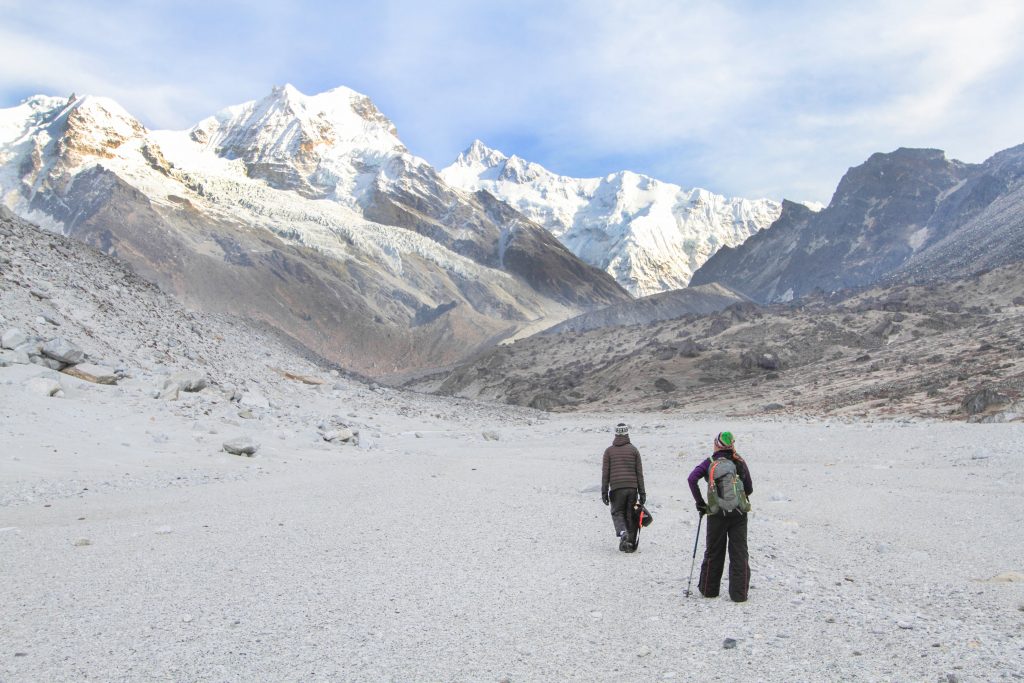
Short itinerary for the Goechala trek
- Day 1: Arrival at Bagdogra (IXB) & transfer Yuksom
- Day 2:Trek from Yuksom to Bakhim
- Day 3: Trek from Bakhim to Phedang
- Day 4: Trek from Phedang to Dzongri
- Day 5: Acclimatisation trek to Dongrilla
- Day 6: Trek from Dzongri to Tansing
- Day 7: Trek from Thansing to Lamuney
- Day 8: Trek from Lamuney to Goecha la and trek back to Thansing
- Day 9: Trek back from Thansing to Tsokha
- Day10: Trek from Tsokha to Yuksom
- Day 11: Travel to Darjeeling and stay
- Day 12: Departure from Darjeeling to your home city.
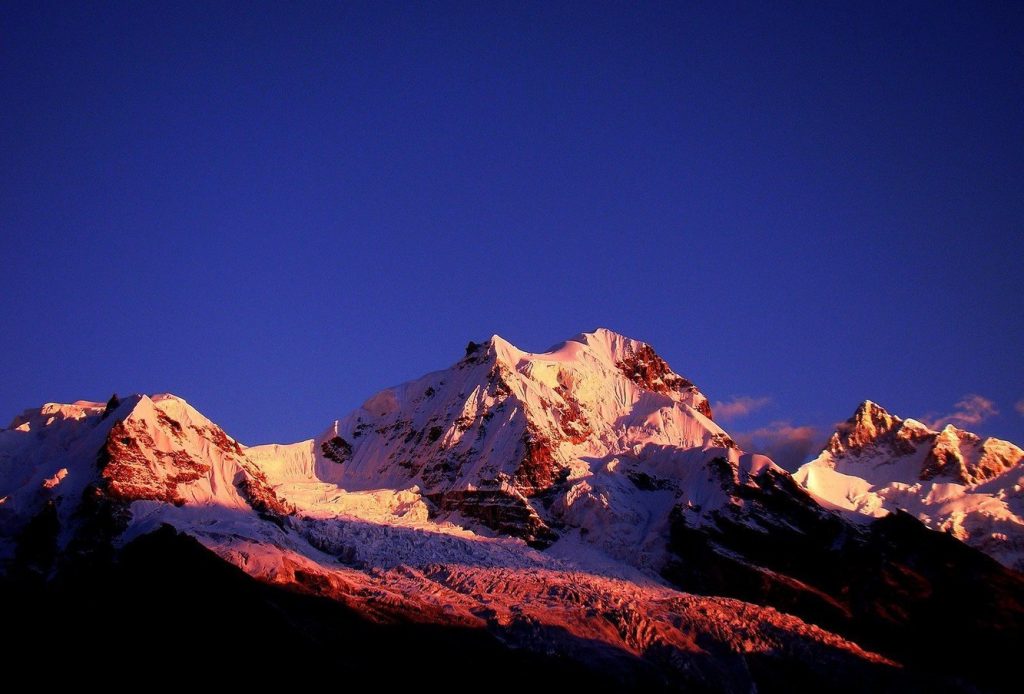
For a more detailed itinerary, visit treknomads official page at https://www.treknomads.com/goechala-dzongri-trek.
Things to carry during this trip
1. Clothing and Gear for the Goechala Trek
- 2-3 cotton t-shirts for sleeping in
- At Least 10 quick drying t-shirts
- 1 long sleeved t-shirt to wear on the short ones
- A fleece sweater
- 10-12 underpants ( carry 4-5 sports bras for women for the better comfort)
- A wind-cheater or a Poncho
- Thermal pants and t-shirts – 2 should be enough
- 3-4 Trek Pants
- Cap
- Woollen Gloves
- Fleece Buffs
- Trekking shoes
- 3-4 pairs of woollen socks
- Flip flops or slip ons
- Knee braces ( if you have knee trouble )
- Sunglasses – Polaroid with 3 categories and above
- Night wear
- Woollen beanie or a Monkey cap
- Casual wear for travelling and sightseeing
2. Things you need to carry in your Toilet Bag
- Toothbrush and Toothpaste
- Shampoo
- Facewash
- Wet wipes
- Sunscreen with Spf 50+
- Pain relief balm
- Medicine for AMS ( We at Treknomads do carry a first aid kit)
- Paracetamol
- Electral/ORS powder
- Lip balm with spf 30+
- Band aid incase you get any blisters
- Quick dry towels
- ONLY Biodegradable Sanitary Pads for women
3. Essential Travel Electronics you need to Carry
- Phone
- Power Bank
- Camera + respective lenses+ Extra battery
- An reader or extra battery
- Chargers and Cables
- Headlight
- Electronics Organiser Bag
Things to remember before you set out for your Goecha la trek
- This trek has some crazily harsh trekking conditions. So proper, warm clothing and other protective gear will keep you safe from the chilling cold. Keep your trekking gear safe and essentials such as a wind-proof jacket, dry socks, and caps.
- Carry a good and sturdy sleeping bag for an excellent, durable, and comfortable night’s sleep. Ensure that you choose correct and good quality footwear and fitted boots to avoid frostbite.
- Always carry a good-quality backpack with a waterproof cover to protect your essentials from damage.
- Most importantly, carry your identification card as you might be expected to present it to the officials for obtaining permits.
- Even though this trek’s difficulty level is moderate to difficult, ensure that you exercise regularly before you embark on this expedition. Regular cardio and weights will build up your stamina for this vital trek.
- Consult your doctor to check whether you are fit for this trek and discuss if you have any medical issues. Try to keep your outfit and backpack light with only important essentials packed. The less, the more beneficial and easy your journey will be.
- Leave the mountains in better condition; we should be responsible citizens to keep the beauty of nature intact. Treknomads have no litter policy, and each trekker must bring back the waste created during the trek.
We hope this blog will help and create a desire in you to make this trek happen as soon as possible. To know more about this trek, visit our website www.treknomads.com.
Related blogs:
How to get fit for the Himalayan trek
The Ultimate Winter Trekking Guide You Need to Read Today!
The Ultimate List of things to pack for the Everest Base Camp Trek
